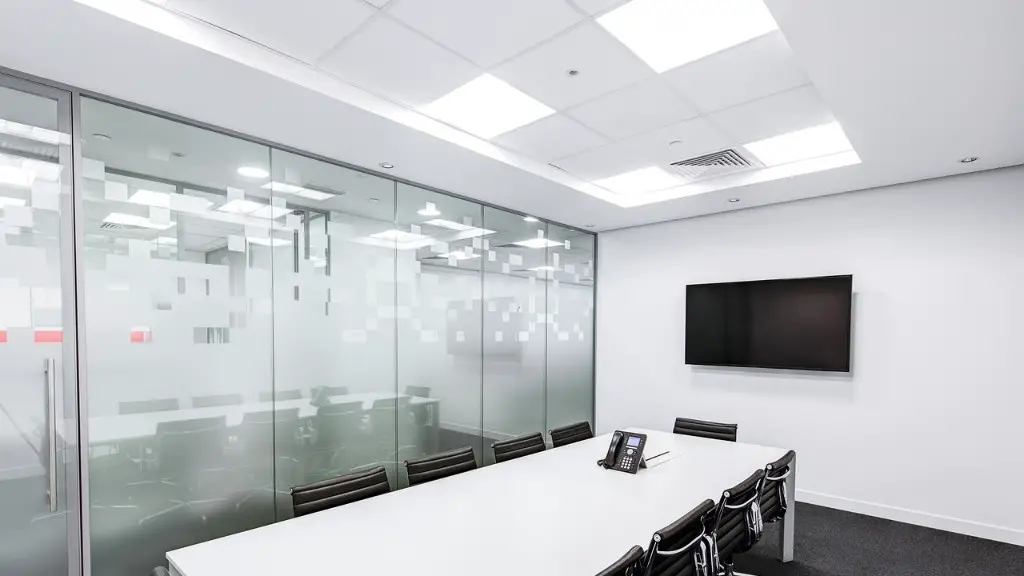If you’re looking to build a facility management company, there are a few things you’ll need to do. First, you’ll need to gain an understanding of the industry and what services are typically offered. You’ll also need to develop a business plan and create a marketing strategy. Additionally, you’ll need to obtain the necessary licenses and insurance. Finally, you’ll need to hire staff and build a team of qualified professionals. With the right planning and execution, you can build a successful facility management company.
The first step is to create a business plan. This will help you map out the steps needed to get your business off the ground. Next, you will need to get the necessary licenses and permits to operate your business. Once you have these in place, you can start marketing your services to potential clients.
How do I start facility management?
A facilities management company can be set up in the UAE with the following documents:
– Copy of the investor’s passport
– Copy of the local sponsor’s passport (if required)
– No Objection Certificate (NOC) if any shareholder is working in a UAE company
– Copy of Emirates ID of the shareholder(s)
– DED registration application form
The four main pillars of facilities management are people, processes, the building, and technology. Each of these pillars is essential to the success of the facilities management function.
People are the most important pillar of facilities management. Without the right people in place, it will be difficult to effectively manage the other three pillars. Processes are the second pillar of facilities management. A well-run facility will have well-defined and efficient processes in place to manage the day-to-day operations.
The building is the third pillar of facilities management. The building itself is a critical asset that must be properly maintained and operated. Technology is the fourth pillar of facilities management. Technology can help facilities managers automate tasks, improve communication, and make better decisions.
What are the 2 major types of facilities management
There are two basic types of facilities management: Hard Facilities Management (Hard FM) and Soft Facilities Management (Soft FM). Hard FM deals with physical assets such as plumbing, wiring, elevators, and heating and cooling. Soft FM, on the other hand, focuses on services such as security, housekeeping, and food service.
A facility management company is responsible for the upkeep and maintenance of a variety of buildings and facilities. This can include anything from manufacturing and industrial buildings to office buildings, retail centres, parks, sports facilities, hospitals, hotels, and arenas. In order to effectively manage all of these different types of buildings and facilities, a facility management company needs to have a good understanding of the specific needs of each type of organization.
Is facility management in demand?
Facility management is a vital role in any company that relies on physical assets and facilities. Facility managers are responsible for the upkeep and maintenance of these assets, as well as the coordination of all the services associated with them.
There is a growing demand for skilled facility managers, as more and more companies are recognizing the importance of investing in their physical assets. Maintenance and facility management companies are always on the lookout for talented facility managers, and many public and private organizations also have departments dedicated to this field.
If you have the skills and experience necessary to be a successful facility manager, you should have no trouble finding employment in this exciting and growing field.
If you want to be successful in business, you will need to have excellent customer service skills. You will also need to be able to effectively manage your business, and have strong administration skills. It is also important to be detail oriented and to have knowledge of economics and accounting. Finally, you will need to be able to handle stress well and accept criticism in order to be successful in business.
What makes a great facility manager?
A Facilities Management Leader has to be confident in presenting problems and solutions to a boardroom environment They must also be able to deal sensitively and appropriately with a variety of stakeholders including directing vendors, contractors and employees.
A facilities manager is responsible for the overall maintenance and upkeep of a property or buildings. This can include everything from routine maintenance and repairs to larger renovations and construction projects. A facilities manager must also ensure that all equipment and supplies meet health and safety standards.
What makes good facilities management
A good manager should take a strategic approach to the planning and management of tasks in order to deliver value to a business’s bottom line. By enhancing company culture, business reputation, and engagement with employees, facility managers can create a positive impact on the business.
Infectious diseases are a major public health concern, and facilities management teams play a crucial role in preventing the spread of these diseases. There are a number of steps that facilities management teams can take to prevent the spread of disease, including:
1. Keep disease prevention a top priority: Facilities management teams should make preventing the spread of disease a top priority.
2. Educate employees on proper infection control measures: Employees should be properly educated on measures that they can take to prevent the spread of disease, such as proper handwashing and using personal protective equipment.
3. Maintain a clean and sanitary work environment: A clean and sanitary work environment is crucial for preventing the spread of disease. Facilities management teams should ensure that all areas of the workplace are clean and free of clutter.
4. Take prompt action to address any potentially infectious disease: If there is a potential outbreak of an infectious disease, facilities management teams should take prompt action to address the situation. This may include implementing additional infection control measures or temporarily closing the workplace.
What are the new trends in facility management?
When it comes to reducing the burden on facilities management teams, workplace experience tools can be extremely helpful. By law, employers must provide a safe and healthy workplace for their employees. This includes ensuring that the facilities are well-maintained and that any potential hazards are addressed in a timely manner.
However, with the rise of hybrid work, where employees are expected to be in the office for a minimum number of days, the burden on facilities management teams has increased significantly. This is because they now have to manage both on-site and remote employees, which can be a challenge.
Fortunately, there are a number of workplace experience tools that can help reduce the burden on facilities management teams. These tools can help with everything from tracking employee whereabouts to managing maintenance requests. By using these tools, employers can rest assured that their facilities are being managed effectively, even when they’re not on site.
FM professionals play a vital role in ensuring that facilities are well-maintained and operate smoothly. They are responsible for a wide range of activities, from providing cleaning and security services to managing repairs and maintenance. FM professionals are found in all sectors of industry, commerce and services and may be employed by consultants, facilities management providers, client departments, the public sector etc.
Is facilities management a stressful job
Facility management can be a stressful job because of the varied and sometimes unpredictable daily challenges. Resources are often shrinking, and demands are increasing.
If you are looking for a career in facilities management, here are some of the most common job titles you may encounter. While the duties of a facilities manager vary depending on the size and type of organization they work for, they typically oversee the maintenance and operation of buildings and grounds.
Is facility manager a good career?
There’s no doubt that a career in facility management is a good choice. It’s an up-and-coming field that is growing in importance, with opportunities across all sectors and business types. The pay is above average and competitive across the spectrum. If you’re looking for a career with good prospects and good pay, facility management is a great option.
The average margin is less than 5% while some companies struggle to make 1% or 2 % margin. This is a big reason why many companies are struggling to stay afloat. With such low margins, there is little room for error or unexpected costs. This can make it difficult to invest in new products or services, or to expand the business. Many companies are forced to cut costs, which can impact quality or customer service. It can be a vicious cycle, as companies that cut costs may see their margins improve, but only temporarily. In the long run, it can be difficult to sustain a business with such low margins.
What is the strongest tool of a facility manager
An enterprise asset management system (EAM) is a software application that helps organizations track and manage their assets, both tangible and intangible. EAM systems are designed to manage assets throughout their entire lifecycle, from procurement and maintenance to disposals and decommissioning.
EAM systems can be used to track and manage a wide range of assets, including but not limited to:
* Buildings and other structures
* Land and other real estate
* Machinery and equipment
* Information technology assets
* Furniture and fixtures
* Vehicles
* Tools and supplies
An EAM system can help organizations keep track of their assets and ensure that they are being used efficiently and effectively. Additionally, EAM systems can help Organizations to reduce operational costs, improve asset utilization, and extend the life of their assets.
Lack of facility information availability is a major issue that leads to field teams being unable to access the necessary facility data and leadership teams not having a clear view of operations. This issue needs to be addressed in order to improve decision making and support operations more effectively.
Warp Up
A facility management company can be built by following these steps:
1. Establish the business. This can be done by filing the appropriate paperwork with the state and local government.
2. Develop a business plan. This plan should include the company’s goals, how it will be structured, and what services it will offer.
3. Raise capital. This can be done through investment, loans, or personal savings.
4. Hire staff. This includes office staff, field staff, and management.
5. Market the company. This can be done through print, online, and word-of-mouth advertising.
The most important thing when starting a facility management company is to have a clear understanding of the services you plan to offer and the industries you want to work with. From there, you’ll need to determine the best organizational structure for your company and build a team of skilled and reliable employees. Finally, create a marketing plan to reach your target clients and market your services effectively. By following these steps, you’ll be well on your way to starting a successful facility management company.





